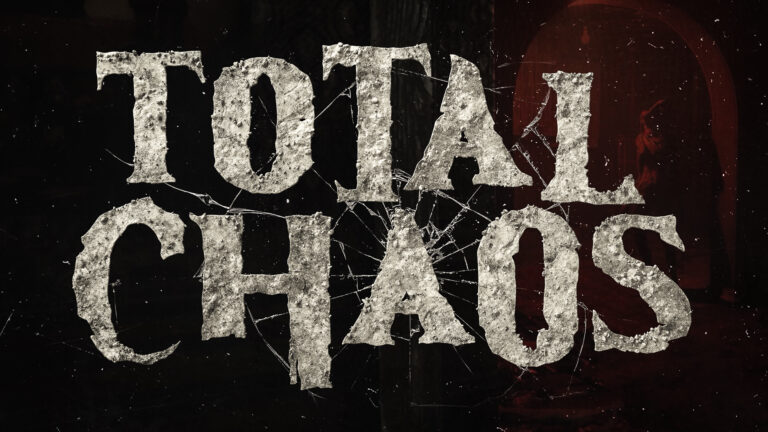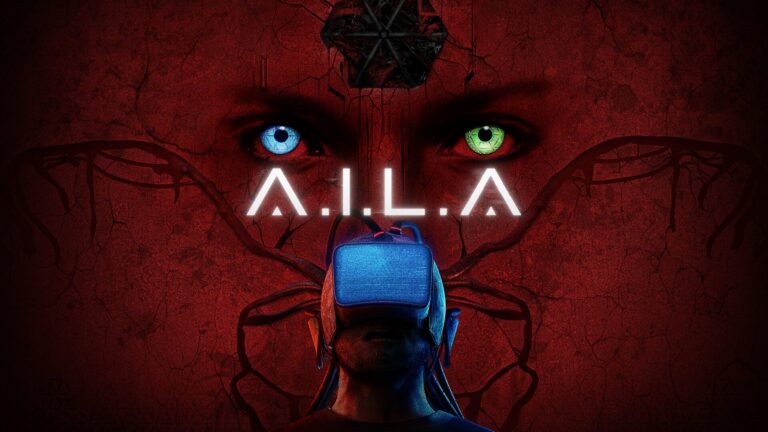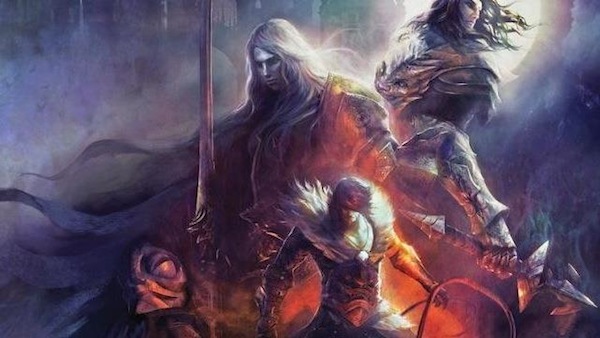
We can’t fight fate. Our ultimate destination is already predetermined. Even if the outcome is horrifying, all we can do is experience the journey. Things happen for a reason, even the most tragic events, and they just seem to be out of our control. Does that make us mere puppets, being constantly manipulated by a force greater than us? And what happens if we can look in the mirror and see exactly what we’ll end up becoming? This is the curse that’s stained the Belmont bloodline.
Castlevania: Lords of Shadow – Mirror of Fate is finally here, more than two years after the release of the original Lords of Shadow on the PlayStation 3 and Xbox 360. Exclusively for the 3DS, Mirror of Fate aims to tell a crucial part of developer MercurySteam’s Lords of Shadow saga set between the original and the upcoming finale, aptly titled Lords of Shadow 2, later this year. Despite being the narrative bridge between bookend entries in a trilogy, Mirror of Fate still manages to greatly succeed as a standalone tale, resulting in what has now become one of my favorite Castlevania games.
So, you know the game’s fate as far as this reviewer is concerned, and now see how it got there.
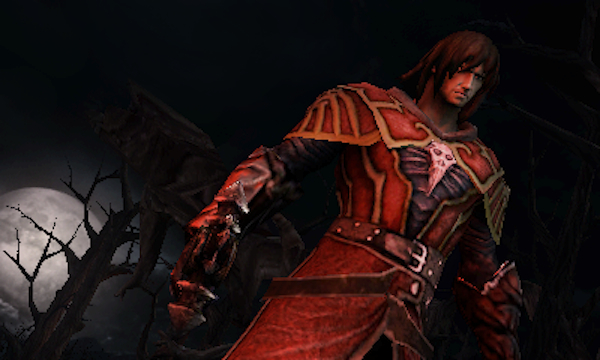
The original Lords of Shadow let players experience Gabriel Belmont’s tragic tale, as he went from a knight of the Brotherhood of Light to the Prince of Darkness himself. Upon the realization that a Belmont ended up becoming Dracula, fans knew that the eventual sequel starring one of the several known Belmonts would hold a much more personal tale than the tried-and-true “go to the castle and defeat Dracula.” Yes, you’ll still be doing that, but in Mirror of Fate, the conflict between the Belmonts and their ancestor is infused with tragedy, giving it a greater level of significance than in prior games (from the original timeline). But before we get to play as this game’s pair of beloved Belmonts, as well as another fan-favorite character reimagined, the story starts with a prologue putting players in the role of Gabriel once again.
The beginning of the game isn’t just a prologue to the events that follow in its 8-10 hour duration, but it also serves as a prologue to the entire Lords of Shadow saga as well, focusing on Gabriel’s confrontation with the Daemon Lord, who ends up becoming a recurring baddie throughout the game. Playing as Gabriel again brought a big smile to my face, albeit his segment only lasting a very short time. I also found this to be a great way of reminding fans that despite this game being more close to the classics, this is still part of the Lords of Shadow saga, which is a different beast from the beloved Symphony of the Night template. Granted, there are some light Symphony of the Night elements within, in regards to exploration and progression, but just like the original game, Mirror of Fate is truly a product spawned from a deep love for the 8-bit and 16-bit sidescrolling classics. Whereas Super Castlevania IV and the 8-bit original served as inspiration for producer Dave Cox and developer MercurySteam, Mirror of Fate is heavily inspired by Castlevania III: Dracula’s Curse.
Like Dracula’s Curse, Mirror of Fate focuses on multiple characters, with each getting not only their own unique abilities like in said NES masterpiece, but also their own style of game, too. Players take on the role of Gabriel Belmont’s son and grandson here, Trevor and Simon respectively, as they take the fight to their ancestor’s doorstep in their own time periods . Alucard also returns, in what is definitely my favorite interpretation of the character. Again, like with Gabriel, it’s all about tragedy, and how fate is something that can’t be fought. This makes for a memorable and emotionally-charged story, with Trevor going up against his father to avenge the death of his mother by his hand, and Simon in turn looking for his father in the castle after he never came back from his quest for vengeance. The way it’s structured is also commendable, with MercurySteam telling the three-act story backwards, taking a cue from Christopher Nolan’s Memento. It leads to a very emotional ending, rivaling the original game’s pre-credits ending. It doesn’t quite trump the original game’s insane epilogue scene, but it’s still amazing nonetheless, capping off one of the best boss fights in the series to date.
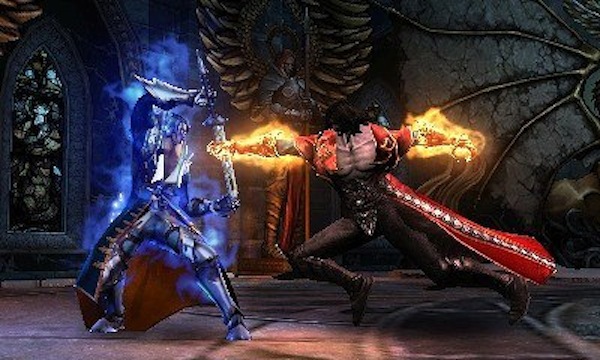
In terms of gameplay, Mirror of Fate is a faithful marriage between the gameplay styles of its console predecessor and the classic 2D games, with a small dose of Symphony of the Night, which I’ll get to in a bit. The combat mechanics from the original game make the jump to a 2.5D perspective on the 3DS quite nicely, with character-specific magic and sub-weapons also in your repertoire. Whereas the classic games had enemies going down in just a few hits, Mirror of Fate utilizes the light and heavy attacks superbly, making each encounter extremely enjoyable and more than just quick battles with minor enemies leading up to the area’s boss. They take a decent amount of hits to die, and in turn, they can take you down pretty quickly. This may be an issue for some, but there are health and magic regen stations scattered reasonably throughout the the game’s environments, so it balances out. You also level up in the game, another element taken from the Symphony of the Night style entries, which boosts your health and magic meters and also rewarding you with new combos to utilize against Dracula’s creatures of the night. Now let’s talk about those creatures of the night, specifically the bosses.
Mirror of Fate houses some of the most memorable boss fights I’ve encountered in a very long time, resulting in some of the absolute best bosses in the entire series’ history. Just like in the classic games, it’s all about the attack patterns with each baddie, then you utilize everything in your moveset to take them down. It’s not just all about attacking with your combos, or basic light/heavy attacks if you so wish, it’s also about evading and successfully blocking attacks. The latter of which allows you to follow up with a series of strikes if done right. The boss battles do really make good use of all your abilities, especially as you start reaching the end of each character’s part of the story. QTE’s are also present here, but I wasn’t bothered by them at all. I guess I’m just part of the minority that isn’t irked by QTE’s, but I truly believe they were used quite nicely in the game, just like they were in its predecessor. There’s one boss fight in particular that stands out, who you face in Trevor’s part. This battle has to be one of the most epic in the series, which leads to a series of QTE’s having to be performed by the player in quite an exhilarating setpiece moment. And then there’s the battle(s) with Dracula. I’ve been saying this a lot, but believe me, the Dracula battle is truly one of the best in the series’ history. I was just bummed about one aspect of it, but I won’t spoil that here! Needless to say, you’ll know what I mean once you beat him and compare that fight back to the older ones. One other nitpick I have with the bosses are the checkpoints. Once a certain amount of damage is done to a boss, a checkpoint will be triggered. So, if you die after this, you won’t have to fight him back at full health. That sort of takes away some of that old-school challenge bosses in the series are known for, but it’s just a minor issue.
It’s not all straight-up action and getting from point A to B, though. As aforementioned, Mirror of Fate also has a good amount of exploration and platforming. Action and exploration are perfectly balanced here, giving the game a sort of “best of both worlds” feel in terms of the series and its two significant styles. But unlike the Symphony of the Night style games, you’ll always know where to go here thanks to an objective marker on the bottom screen’s map, which you can also mark yourself for future reference (like marking where a secret item you can’t reach yet is). Getting lost is pretty much out of the question. However, that’s not a bad thing at all (though I can see why some fans may dislike this). This ensures that you’re always engulfed in the game’s superb pacing, going through each of the three acts without any dull moment. There’s also a good amount of backtracking throughout the entire experience, which is always a good thing. I never got sick of any of the environments in the game, and it was truly a joy traversing the castle and all its areas. Going back to already covered grounds with another character in another time period was also quite satisfying, and you truly get a sense of how much time has passed. I felt right at home here going through the castle and all the classic areas it houses, from the caves underground to the beloved clock tower, I enjoyed every second of my stay in Dracula’s house.
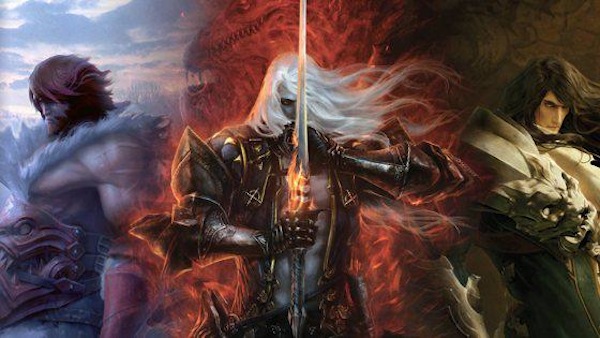
I absolutely have to devote a portion of this review to each of the main playable characters. The prologue with Gabriel gets you reacquainted with the Lords of Shadow combat mechanics, which then transitions to Simon’s part of the story. It was truly fantastic playing as the iconic Belmont once again, and I loved how MercurySteam succeeded in making him look like the grisly warrior he once was while still giving him his red hair. I wasn’t that big of a fan of his voice acting, but it sufficed, and it didn’t really bother me all that much. Simon’s quest (yeah, boy!) was a satisfying one here, and it had a good classic feel to it with the intro having you face hordes of ghouls and being able to use classic sub-weapons like the axe (which you obtain in a very awesome scene) as well as an oil flask which works similar to the holy water. And, yes, he does start out with his classic whip. Swinging around as him from platform to platform truly brought me back to playing Super Castlevania IV. It was also really nice to see Sypha play a role outside of just being Simon’s mom. Her sprit is actually one of his magic abilities, shielding him from attacks. Fans will definitely dig her appearance as it’s quite similar to how she appeared in Dracula’s Curse. Now it’s on to another character that made their debut in said NES classic, Alucard.
When Alucard was first revealed as a playable character in Mirror of Fate, I was insanely excited. I was really eager to see how the Lords of Shadow version of the character would be, so eager that I ended up writing a few articles speculating about his role in the game (as well as in Lords of Shadow 2, after seeing a glimpse of him in its debut trailer). Now, after beating the entire game, this is truly my favorite version of the character. I know that’s going to be met with disagreement by some, but I really love how MercurySteam portrayed him. Not unlike Gabriel, Alucard is also a tragic character with an emotional story that ends with quite an important revelation and an amazing boss battle. His portion of the game played like a “Separate Ways” type of scenario while also serving as a nice homage to his beloved PlayStation 1 game. His portion had the most substantial amount of backtracking and exploration, with puzzles thrown into the mix as well. Alucard wields his own form of the combat cross known as the Dark Pain. You’re also able to use some classic abilities like the mist and wolf form, the former being just as useful for combat situations as it is for traversal. As a sub-weapon you can utilize the stopwatch and you’re also able to throw bats, which is always a good thing for the son of Dracula. But now we move on to Dracula’s actual son in this universe, Trevor Belmont.
When it comes time to decide who my favorite Belmont is, Trevor always ranks pretty high, along with Richter. Once again, like with Alucard, I love how MercurySteam portrayed the classic Belmont here. His story is also a tragic one, like his “brother” Alucard and his daddy Gabriel. I’ll admit this straight up, Trevor’s ending actually moved me to tears, not as much as Gabriel’s did in the original game, but still. Trevor’s act is the final one in the game, and it’s truly the best if you ask me. You have some amazing set-piece moments in there, with an intense boss fight that perfectly uses QTE’s against a giant monstrosity, serving as this game’s titan boss battle, to a insane platforming segment in the clock tower with a falling bell. Trevor’s act was a complete joy to experience. As far as his main weapons and abilities go, Trevor wields the combat cross just like his father, as well as his light/dark magic attacks, the latter boosting your attack power and the former healing you with every strike. You can also utilize the classic boomerang subweapon as well as en electric bomb. Trevor also starts out with double jump whereas the other character that’s able to use the move, Alucard, obtains it later on (yeah, Simon can’t double jump, he carries the weight of his family). Mirror of Fate definitely ends on a high note with Trevor’s act. And, of course, it all leads to a near-perfect battle with Dracula. It wasn’t entirely perfect because…yeah, well, no spoilers!
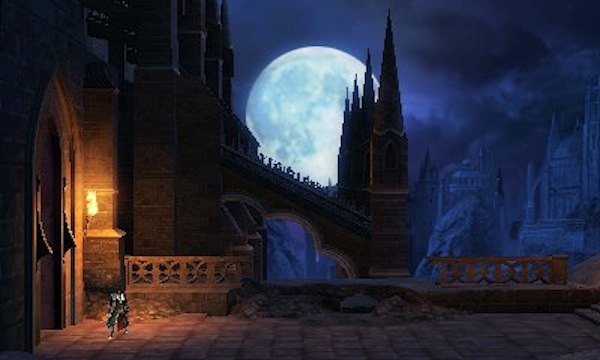
The Nintendo 3DS has been home to quite a few games with a console-quality presentation. Resident Evil Revelations and Mario 3D Land come to mind, and now, Mirror of Fate joins that pantheon. MercurySteam really poured their all into the game and it definitely shows. The visuals here are top-notch for a handheld title, with the original game’s art style making the jump to the small dual screens beautifully. Cutscenes utilize a beautiful cellshaded look to great effect, and the change in visual styles from gameplay to cinematic was never an issue. Thanks to the graphical prowess and superb art design, the game is one of the most atmospheric I’ve ever played on a handheld, right up there with Resident Evil Revelations. I loved seeing how the castle changed from one time period to another, and picking out every little detail I could. There’s a good amount of visual references to the classic games sprinkled throughout your journey to Dracula’s iconic throne room, like a carousel in Simon’s quest with nods to some classic bosses. And there were moments where I just stood there and looked at everything in the background, sometimes left in awe, like the moments where the castle was in full view in the background, with the pale full moon shining its light on it, making for a very eerie and amazing vista.
The 3D also helps the game shine even more, resulting in another layer of immersion added to the experience. It’s like looking into Dracula’s castle at the palm of your hand, though I found the 3D to be a bit too strong at times. But that was maybe because it’s been a while since I played a 3DS game with the 3D settings up all the way. MercurySteam makes really good use of 3D, with parts of the castle looking even more remarkable with it turned on, you really do get a great sense of depth. Having the 3D on also doesn’t really alter the framerate negatively, and everything ran smoothly for me during the 8 hours it took me to beat the game in my first playthrough. And then you have the music…
Let’s get this out of the way first: there aren’t really any classic tunes remixed here. I would’ve loved to hear at least a couple of classic tracks remixed by Oscar Araujo, especially Simon’s Theme. Regardless, Mirror of Fate’s soundtrack is downright amazing, and in the same style as its console predecessor. Oscar Araujo continues to impress with his music, and I’m itching to have the soundtrack available to purchase. There are some really amazing tracks here, as well as returning ones from Lords of Shadow. I recommend playing the game with a pair of headphones on to be able to appreciate the music to its fullest. And just like with the game’s atmosphere and attention to detail, I found myself stopping many times to just listen to the music. In the end, Oscar Araujo’s music complements the game’s gothic style perfectly, making for truly astounding presentation values on both the audio and visual fronts.

After the credits roll, there’s still more to do. Aside from the various difficulty modes and new game +, there are many secrets to discover throughout the game. They not only serve to satisfy the completionist in you, but also to get your characters maxed out. XP isn’t just collected by downing enemies, you’re also awarded experience by collecting the secret Brotherhood Knight scrolls hidden throughout the game. These are also quite nice to read, and there’s one in particular that has a brilliant reference to another beloved classic series. There are also many chests for you to find, which increase your HP/ MP and ammunition count for subweapons. Lastly, you have bestiary entries to track down, too. The bestiary is quite awesome, allowing you to not only read about the monsters, but also view a full 3D model of them, too. You’re definitely going to want to achieve that 100% completion rate, because doing so unlocks the game’s secret ending. Again, no spoilers, but said ending should definitely place a smile on any Castlevania fan’s face.
My biggest issue with the game was the lack of a boss rush mode. The game houses some amazing boss fights, and it was a shame to not have boss rush unlocked after beating it. It’s definitely a missed opportunity, but something tells me it might be saved for DLC. A sound test mode would have also been nice to have unlocked after beating the game, because Araujo’s score deserves to have as much exposure as possible. But, again, these might be things added via DLC. I just feel like they should’ve been actual free unlockables. Aside from that, it would’ve been nice have the checkpoints during boss fights disabled, to have that old-school challenge that’s always been present with the classic games and their bosses. But even these minor issues aren’t enough to hinder my overall love for this game.
Castlevania: Lords of Shadow – Mirror of Fate is a classic. It’s not just a faithful entry in the series, it’s also one of the best. MercurySteam has added another shining jewel to the 3DS’s impressive library of games. It’s sad that there won’t be another handheld entry by this developer, but we’ll still have this game to enjoy for years to come. I know I’ll always be revisiting it, to experience the Belmont family’s tragic tale over and over again. Game of the Year contender? You bet. Mirror of Fate is one of those games I can safely say will end up becoming a timeless classic. Bring on Lords of Shadow 2!
 (9.5 / 10)
(9.5 / 10)
Amazing
 (9.5 / 10)
(9.5 / 10)
 JBoc924
JBoc924